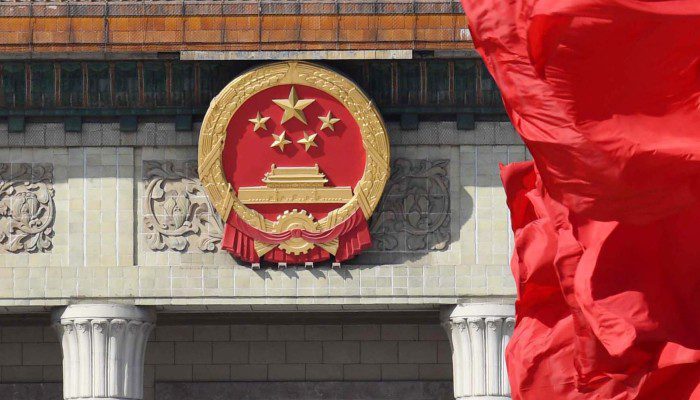In December 2015, the People’s Bank of China (PBOC) introduced green financial bonds into the country’s interbank bond market. Simultaneously, the Green Finance Committee of the China Society for Finance and Banking published the Green Bond Endorsed Project Catalogue. In just one year, the market grew to the biggest globally, with 40% of the 2017 issued green bonds being in China. In 2022, China issued green bonds worth $76.25 billion, which is expected to be exceeded in 2023.
What are the Green Bonds?
Green bonds are a financial instrument designed to support sustainability and environmental projects. Such projects may include financing energy efficiency, pollution prevention, and sustainable agriculture, all while mitigating climate change. The issuance of green bonds may consist of tax incentives, such as tax exemption and credits. Green bonds play a crucial role in encouraging individuals and organizations to invest in environmentally sustainable projects, thereby contributing to the global effort to address climate change and promote sustainable development.
Is ESG relevant for the SMEs in China?
Green Finance Pilot Zones
China is advancing the establishment of a sustainable financial system through the initiation of pilot zones dedicated to green finance. The first set was introduced in June 2017 in Zhejiang, Jiangxi, Guangdong, Guizhou, and Xinjiang, followed by the launch of Lanzhou pilot zone in December 2019. The primary objective of these pilot zones is to strengthen the role of green finance in domestic financial institutions and to encourage green credit, green insurance, and green bonds. They also aim to explore the establishment of markets for environmental rights and develop risk control mechanisms for green finance. China plans to continue promoting the construction and development of green financial reforms and innovation pilot zones. Municipalities like Beijing, Chengdu, Chongqing, Shenzhen, and Shanghai are actively working towards promoting the development of local green finance.
Green Bond Principles
As it is governed by a variety of regulatory authorities, China’s green bond market is subject to diverse rules, each implemented separately. Prior to 2022, the allocation requirements of the proceeds percentage allocated to green projects differed depending on the bond type. In general, up to 50% of green funds could be used in general operations.
To address the greenwashing risks, in 2022 the China Securities Regulatory Commission (CSRC) and PBOC published the new Green Bond Principles. These principles enforce a stricter standard: now it is required that 100% of bond proceeds are used for green projects. This marks a significant development for foreign investors who want to invest in China’s domestic green bond market. The central government is currently planning additional financial market reforms, that are expected to bridge the regulatory gap in the onshore green bond market. In the wake of these reforms, the CSRC will maintain its oversight over the securities sector while taking over the responsibility of approving enterprise bond issuance from the National Development and Reform Commission.
So, what makes the Chinese green bond market attractive for overseas investors?
- Market size
The Chinese bond market has become the second largest in the world, standing at a massive US$17.4 trillion in 2022. It has experienced double-digit growth rates annually since 2000.
A study by AXA’s Yao and Shen shows that green bonds usually offer higher yields (around 20 basis points) than conventional bonds with similar maturity and duration. This finding contradicts the notion of a ‘greenium’ in the Chinese market and suggests that investors are often paid to ‘hold green.’ This helps to explain why green bonds consistently outperform their conventional counterparts in both gross and risk-adjusted terms. For global investors who invest solely in green assets, it is reasonable to compare China’s green bonds with global green bonds. The Chinese bonds have a shorter maturity and duration but offer a higher yield, exceeding 100 basis points. China’s bonds have outperformed global green bonds significantly in the past six years.
- Bond Connect
The 2017 Bond Connect channel’s establishment allowed international investors to access China’s onshore bond market via trading infrastructure in Hong Kong. This was a big step, as the onshore market is less volatile due to its higher liquidity compared to the offshore market.
- China – EU Common Ground Taxonomy
Common Ground Taxonomy initiative was a joint effort with the European Union to identify commonalities and differences in the respective taxonomies. This report does not have a legal effect but provides investors with guidelines on what assets are accepted as green investments in both regions.
The promotion of green transition goals coupled with improvements in transparency and compliance with international best practices, could make China one of the world’s top destinations for green bond investment in the future.
Discover Our Company Incorporation Services
Outlook
China’s green transition is still a work in progress, however, the immense market size and government’s commitment to the ESG goals and the progress towards sustainable business practices provide significant potential for growth in the green finance sector and presents exciting opportunities for foreign investors.
S.J. Grand is a full-service accounting firm focused on serving foreign-invested enterprises in Greater China since 2003. We help our clients improve performance, value creation and long-term growth.
Previous Articles:
- Strategic Tax Optimization for Foreign Subsidiaries in China
- The Unmasking: How Chinese Manufacturers Are Challenging Western Luxury Brands
- Why Chinese Suppliers Should Maintain Long-Term Confidence
- Trump’s Tariff Moratorium: A Game of Chicken with Chinese Characteristics
- How I Learned to Stop Worrying and Love the Trump Tariffs: China’s Silver Lining Playbook







